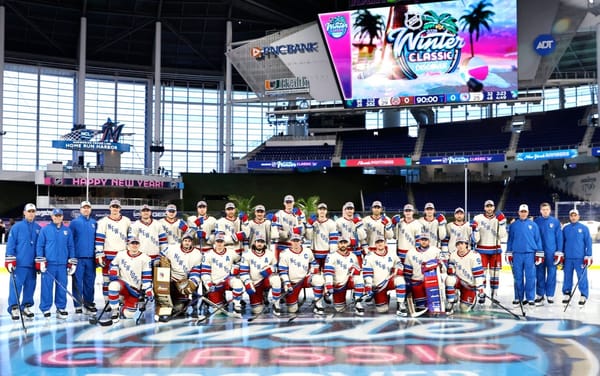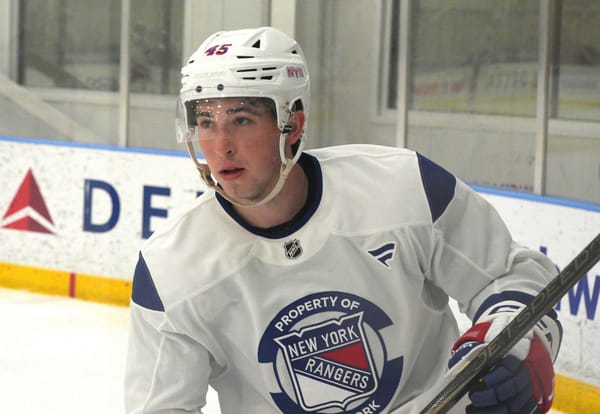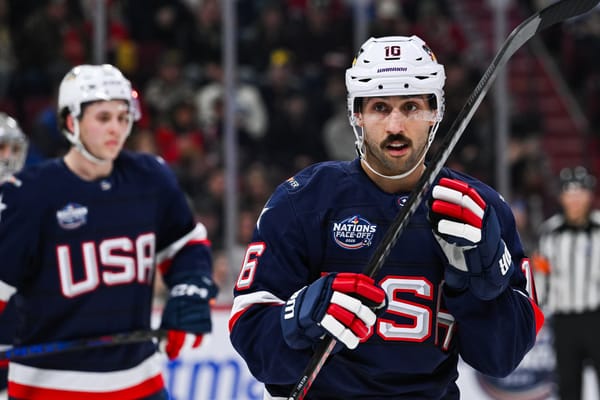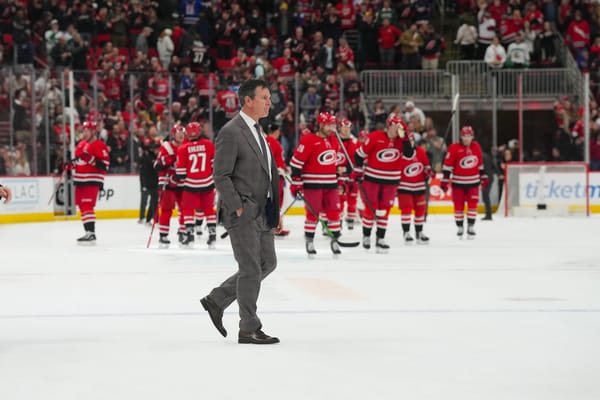Why the Rangers Shouldn’t Depend on 2019 Free Agency
For the rebuilding Blueshirts, hope is not a reliable strategy.
For what feels like the first time in years, July 1 came and went and the New York Rangers’ impact on it could most aptly be characterized as nonexistent. A win of sorts, yes, but an odd feeling nonetheless. Sure, they signed Swedish defenseman Fredrik Claesson—a depth acquisition at best—to a one-year contract, but they were otherwise conspicuously absent while most of the rest of the league spent wildly.
In fact, according to CapFriendly, more than $226 million in first-year cap charges were awarded across 127 contracts on July 1 alone; Claesson’s paltry $700,000 contract is but a mere drop in the bucket of that gross total.
In total, there were 127 contracts signed yesterday, this amounted to a cap hit sum of $226,394,166 and a total contract value sum of $786,840,000https://t.co/XpdrFRgPbt
— CapFriendly (@CapFriendly) July 2, 2018
The Rangers never held court for John Tavares—inarguably the cream of the class—and were presumably never players for the likes of James van Riemsdyk, Paul Stastny, or any of the few remaining names of note who actually made it to market this summer. And, though none of this should come as a surprise given the state of the team, who announced their intention to rebuild in February, the dearth of quality players available strikes an ominous tone.
For the past decade, the NHL’s veritable “free agent frenzy” has been something of a misnomer except for the few movers and shakers who do reach the market each July. Teams stupidly pay through the nose—as evidenced above—for secondary and tertiary players, but the sheer lack of high-end talent present every July 1 is evidence that, when it comes to free agency, hope is not a strategy. Not even for financially powerful teams like the Rangers.
See, that’s the thing about a prospective free agent – they need to literally become one in order to bridge the gap between hope and reality. And too few ever do, as my colleague Tom Urtz Jr. found in examining the NHL’s broken free agent system:
There was such a spectacle about [Tavares] meeting with teams and speculation about what they were presenting because this doesn’t happen every day. In a world where the best players are hitting the market in their prime, this behavior becomes normal and a part of the cost of doing business.
The most notable superstar free agents to sign with a new team prior to Tavares include the dual 13-year, $98 million deals that Zach Parise and Ryan Suter signed with the Minnesota Wild in 2013 and Brad Richards’ nine-year, $60 million deal with the Rangers in 2011. The fact that there haven’t been more deals like this is just crazy.
Crazy indeed, but not unexplainably so. Simply put, the reason so few of these deals are ever signed is because too many players re-up with their current team before the rest of the league has a chance to bid for their services. This, in turn, produces a ripple effect on the value of the players who do reach free agency – which, in addition to inflation, helps in squaring away that $5 million price tag on Tyler Bozak, for example.
Imagine for a moment how many teams would have gone hot and heavy after John Carlson or Marc-Edouard Vlasic this summer, or Brent Burns, Victor Hedman, or Jamie Benn the season prior. Now, look at the names below and recognize that the projected list of would-be free agents tends to be significantly impacted by the unwillingness of most NHL players to ever test the waters of free agency:
This fact is precisely why, even for the rebuilding Rangers, the prospect of a 2019 free agent class that could but surely won’t include all of Erik Karlsson, Matt Duchene, Artemi Panarin, Tyler Seguin, Jeff Skinner, Wayne Simmonds, and Max Pacioretty, among others, is statistically not worth waiting on. If the Blueshirts’ plan includes strategically targeting a particular player approaching free agency—like the supremely talented Panarin—then trading for them and negotiating an extension is the only way to be absolutely certain they get their man.
The asking price on the Russian sniper, who averaged 0.96 points per game over the last two seasons, is likely to be high. Possibly somewhere in the neighborhood of a roster player like Pavel Buchnevich, a first-round pick, and one of the team’s newly acquired prospects. Even for Panarin, it’s fair to question if the Rangers are in any position to warrant paying it just yet. Not to mention the fact that giving up quality assets to a divisional rival could produce additional stress for years to come. But acquiring the 26-year-old now would surely boost the Blueshirts’ odds of keeping the “Bread Man” around for the long-term. After all, even if he is one of the few who actually meets July with open arms, there’s no guarantee the Rangers’ offer would top that of rival suitors, of which there will likely be many.
Moreover, it’s been suggested that Panarin would want to be in a bigger market than Columbus if he signs a long-term deal, but the Blueshirts won’t exactly corner the market in that respect either, and might not offer the best short-term odds of winning for that matter – key factors, should this get to the supply and demand nature of competitive bidding.
While none of this should be taken as an endorsement of the Rangers prematurely spending from the trove of quality prospects they’ve accumulated over the past three months, the fact remains that waiting out the market can quickly backfire on any team putting too much stock in the hope it may offer. Just ask the Toronto Maple Leafs, who despite their victory in landing Tavares this summer, sure seemed married to the concept of signing Drew Doughty next year. Instead, Doughty opted to stick with the Kings to the tune of $11 million per season for the next eight years, potentially busting Toronto’s plans for their blue line as they enter a Cup contending window.
These same Leafs also missed out on the opportunity to ink Steven Stamkos in the summer of 2016. Rather than entertain the idea of “coming home”, the Markham native chose to stay with the Lightning just two days before he’d have been presented with offers worth more than the $8.5 million per season he settled on. You can bet your bottom-dollar the Leafs’ offer would have been among the highest, if not the highest, he’d have received had he only made it another 48 hours. Though it’s fair to note that the lack of state income tax in Florida played a big factor there, as well.
Likewise, how quickly would the Pittsburgh Penguins have tabled a long-term deal to Brad Marchand—who showed considerable chemistry with fellow Nova Scotian Sidney Crosby during Canada’s World Cup of Hockey tournament two years ago—had he ever made it to free agency in the first place? The prospect of uniting the two, who skated together in the summer of 2016, made a ton of sense. But not enough to keep Marchand from re-upping with the Bruins a year ahead of his ability to test the market.
Again, assuming they’ve pinned their hopes on a specific player heading into 2019 free agency, counting on that player to withstand the pull of familiarity or the lure to remain with any team that acquires them between now and then is a chance the Blueshirts can’t afford to take. The price might be steep to pay, but there’s no denying that the team who owns a players rights ahead of free agency stands the greatest chance of keeping that player.
Should the Rangers’ shortlist get cut short next offseason, however, they can still turn to the trade market. They can also simply run a repeat performance of this summer’s behavior as a perfectly acceptable alternative – at least for now, while the team operates in a one- or two-year window where expectations to win are relatively low. It’s probably even fair to suggest that continuing to acquire and develop young players, rather than using them to add a game-breaker or two, is the best course to plot.
Yet, with the right talent injections and quick development of important youngsters like Filip Chytil, Lias Andersson, and Vitali Kravtsov, adding the Blueshirts to the list of contenders for 2020 isn’t so far-fetched. The fulcrum from rebuild to contention, however, cannot reliably swing on the hope that Panarin and Karlsson (or some similar combination of players) buck the trend to find free agency. It just doesn’t happen often enough to be depended on, even if it would make for an amazing series of events.





